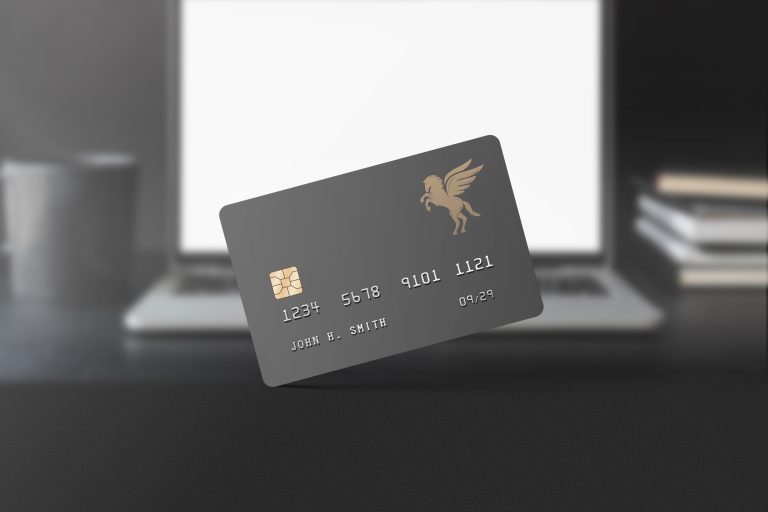What if I told you that deep inside your wallet is a secret code allowing you to maximize the amount of money you save on travel?
Imagine yourself at the start of an incredible journey, eager to discover far-off places and make enduring memories. But amid all the excitement, handling your finances overseas is a crucial thing to think about. Everything begins with careful preparation, right down to the last penny, for meals, trips, and souvenirs. The real question is this: should you load up on prepaid travel cards or use your reliable credit card to handle your finances while travelling abroad? We’re going to solve the long-standing problem today. We’ll look at the features of prepaid travel cards and weigh their advantages against the appeal of credit cards for international travel. Prepare to make educated decisions and choose the best travel card strategy that fits your desire to travel.
Prepaid travel card explained
When travelling the world, a prepaid travel card is your key to financial independence. Imagine it as your money vault, filled with cash, before you set off on your travels. Because it isn’t connected to your bank account, it shields your money from danger. You may efficiently complete transactions overseas using a prepaid card, avoiding annoying currency conversion fees and unforeseen costs. It’s also reloadable, so you may add money as needed. Simply put, a prepaid travel card is your hassle-free travel companion for easy foreign spending.
How a prepaid travel card works:

How to spot and prevent impersonation fraud
The benefits of having a prepaid travel card:
- Security: Protects your bank account from fraud or theft as it’s not linked to your primary funds. If lost or stolen, promptly lock and report your prepaid card to prevent unauthorized transactions. Contact the issuer to retrieve the remaining funds.
- Convenience: Eliminates the need to carry large amounts of cash or risk using your primary credit card.
- Cost-Effective: Avoids fluctuating exchange rates and foreign transaction fees as you lock in your exchange rate when loading funds.
- Flexibility: Reloadable, allowing you to add necessary funds while travelling.
- Peace of Mind: Provides clarity and control over spending, ensuring worry-free adventures abroad.
The Drawbacks of having a prepaid travel card:
- Limited Acceptance: Some merchants or establishments may not accept prepaid travel cards, limiting your purchasing options.
- Potential Fees: While prepaid travel cards may boast no foreign transaction fees, they may still come with other charges, such as reloading or international ATM fees.
- Exchange Rate Lock: While locking in an exchange rate can offer stability, it also means you might miss out on favourable exchange rate fluctuations. Imagine planning a European trip and loading your prepaid card when the exchange rate is 1 EUR = 1.20 CAD. You lock in this rate to ensure stability. However, the exchange rate improves to 1 EUR = 1.25 CAD before your trip. Due to the locked exchange rate, you miss the opportunity to benefit from this favourable fluctuation.
- Reload Hassles: Reloading funds may sometimes be more complex than expected, with potential delays or complications. Reloading methods include online, in-app, and in-person reloads, each offering different processing times and convenience levels.
- Loss of Funds: If your prepaid travel card is lost or stolen, recovering the funds might be more challenging than a traditional credit or debit card.
Prepaid Travel Cards Fees:
| ● Reloading Fees: Some cards might slap on charges when you reload funds onto your card. Watch out for sneaky fees that eat into your budget.● International ATM Fees: International ATM fees on prepaid travel cards can quickly diminish your travel funds. Compare these fees with using international credit cards, which may also incur high ATM withdrawal fees, leaving you shortchanged.
● Activation fees: Some prepaid cards impose an activation or purchase fee, typically payable only once. However, these fees are non-refundable and can significantly impact your card’s initial value. ● Non-Supported Currency Fees: Load the right currency onto your card to avoid non-supported currency fees. Choosing the wrong currency could lead to unexpected expenses. ● Unloading Fees: When you return home and seek to reclaim your remaining funds, be mindful of unloading fees. Ensure that repatriating your money doesn’t come at an unforeseen cost. |
Prepaid Travel Card vs. Credit Cards
Credit Card Prepaid Travel Card:
| Currency Exchange Rates: | When you swipe your credit card abroad, brace yourself for real-time currency exchange rates dictated by your card provider (think Visa or Mastercard). These rates are subject to change and may quietly increase your costs. | On the other hand, you pre-convert your currency before you leave when you use a prepaid travel card. With this knowledge, you can estimate your spending caps in advance and avoid unexpected changes in interest rates. |
| Interest Charges: | Interest in credit cards can be quite worrisome. When you don’t pay off what you owe, you get charged extra money, often at a high rate, like 19.99% or even more. Be careful because these charges can quickly pile up and become a big problem for your finances if you don’t deal with them promptly. | Prepaid travel cards save you the suffering of compound interest. You establish a spending limit on the card by loading money onto it without worrying about interest accruing over time. |
| Foreign Transaction Fees: | Prepare for potential financial challenges. In addition to fluctuating exchange rates, credit card companies may impose extra charges for foreign transactions, usually 2.5-3% of your purchase. | Although prepaid cards offer refuge from foreign transaction fees, it’s essential to be cautious of undisclosed expenses. Certain issuers may increase their exchange rates discreetly, including extra charges. Remembering to carefully compare options before committing is necessary. |
Cool Fact:
| Credit card issuers add a foreign transaction charge when they convert your transactions from overseas currencies back into Canadian dollars for your credit card statement. This fee doesn’t just apply to purchases – any refunds you get abroad are also fair game. Not all cards play this game – some skip the foreign transaction fee altogether. But hold up – just because they skip one fee doesn’t mean they’re fee-free. They might be sliding in a higher exchange rate than the credit card network offers. Remain vigilant and observant. |
Deciding between a prepaid travel card and a travel credit card ultimately hinges on your needs. With a clear understanding of their differences, you can confidently choose between credit and prepaid travel cards. Remember, both options can work hand in hand to enhance your travel experience. Additionally, prioritize learning about responsible credit card usage and fees to ensure a smooth journey. And let’s not forget about travel safety and overseas security – always stay informed and prepared to safeguard your adventures. To know the best-prepaid travel card for international travel, visit. So, venture forth confidently, armed with the insights to craft unforgettable travel memories while prioritizing your safety and financial well-being.


